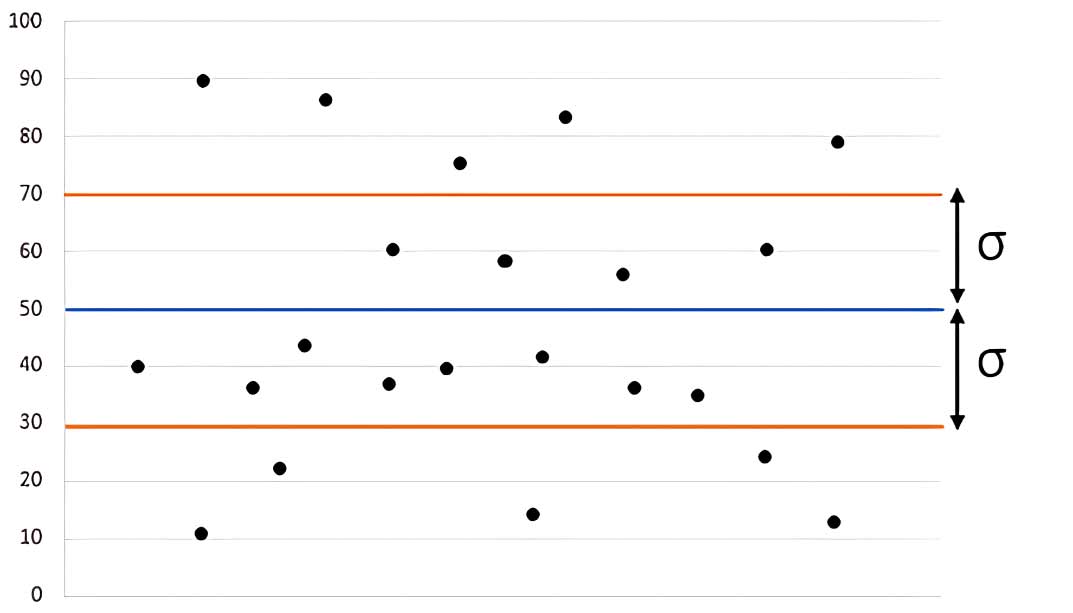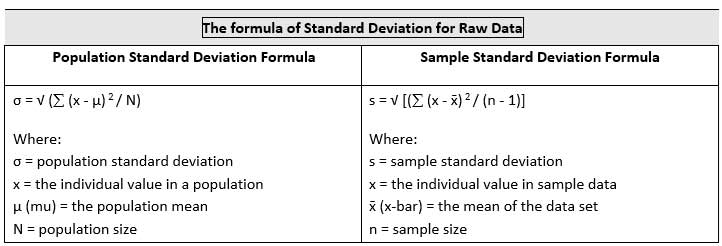
Publisher : Leona Max



SD = √ [ f(x – xÌ„) 2 / f]find standard deviation (SD) of raw or ungrouped data.(n - 1) for sample data.(x) of each class interval by adding the upper and lower limits of each interval and dividing by 2. (xÌ„) for group data using the following formula: xÌ„ = (Σ(fx)) / Σf (x) of each interval. Take a square of the calculated deviation and multiply the result by the frequency of that interval.(85 + 91 + 78 + 90 + 80) / 5 = 84.8
(85 - 84.8)² = 0.04(91 - 84.8)² = 38.44(78 - 84.8)² = 44.84(90 - 84.8)² = 27.04(80 - 84.8)² = 23.04(x - xÌ„) 2 = 0.04 + 38.44 + 44.84 + 27.04 + 23.04 = 134.79 [(x - xÌ„) 2 / (n - 1)] = 134.79 / 4 = 33.7 SD = √ 33.7 = 5.815.81

∴ xÌ„ = (Σ(fx)) / Σf xÌ„ = [(5 × 21) + (6 × 24) + (8 × 27) + (10 × 30)] / (5 + 6 + 8 + 10) = 765 / 29 = 26.38
144.7 + 33.96 + 3.04 + 130.9 = 312.6= 312.6 / 29= 10.79SD = √10.79 = 3.28